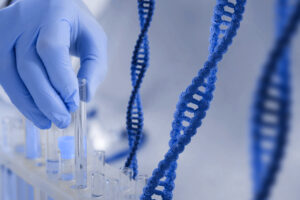Environmental pollutants have the power to significantly diminish fertility in both men and women. Heavy metals have been linked to semen quality and morphology issues; air pollution from fossil fuels may also have negative consequences for fertility.
Environmental toxins may contribute to infertility through hormonal disruption and direct damage to the reproductive system, making pregnancy harder to achieve and IVF treatments less likely to work.
Air Pollution
Air pollution is a significant source of health concerns and fertility issues, including birth defects or miscarriage. Hormonal disruption from pollution may result in infertility. Furthermore, its exposure can cause oxidative stress which damages DNA cells in our bodies, possibly having lasting consequences such as miscarriage.
Researchers have discovered that women living in areas with high air pollution levels are more likely to have difficulty becoming pregnant. This may be because pollutants contaminate both sperm and eggs, decreasing fertility significantly and rendering in vitro fertilization less successful.
Water contamination is another environmental factor that can undermine fertility. Contaminated water may interfere with hormone balances and cause reproductive disorders; they also increase risk of diseases like cancer – one of the main contributors to infertility.
Air pollutants may wreak havoc with fertility by disrupting hormones and damaging oocytes, leading to infertility among young women, in particular. Researchers suggest four mechanisms by which air pollutants could impact fertility: hormonal disruption due to endocrine disruptor action; oxidative stress induction; DNA alteration or epigenetic modifications; direct damage caused to reproductive organs such as the ovaries that results in spontaneous or IVF infertility; direct damage can also result in spontaneous infertility cases.
Water Pollution
Due to environmental factors that can impede fertility, women who are exposed to toxins or pollutants can have difficulty becoming pregnant or having healthy pregnancies. Such environmental factors include air pollution, water contamination, exposure to toxic substances like chemicals or toxic fumes, lifestyle habits such as smoking or poor nutrition and genetic influences.
Women’s fertility can be compromised by chemical pollutants, particularly endocrine disrupters that interfere with natural hormone processes in the body and damage oocytes – making pregnancy harder or even causing miscarriage or miscarriage – as well as by an increase in health conditions that make conception harder than expected. Toxins such as these have also been known to lead to pregnancy loss, miscarriage and increased risks that make conception harder than expected.
New research conducted at Oakdale Reservoir in California which was polluted with toxic “forever chemicals” has demonstrated increased infertility rates and premature birth rates among female attendees, according to this new study. According to its researchers, it’s the first direct link between industrial chemicals used by factories and potential reproductive effects on reproductive health issues.
Men can also experience fertility issues due to environmental contaminants like lead and mercury, which are known to damage sperm while interfering with hormone levels. Other common environmental toxins may include pesticides or radiation; men exposed to mancozeb may have lower sperm count and motility rates than others.
Pesticides
Environmental contaminants, including chemicals and toxins, have been linked with fertility issues in both men and women. Chemicals in our environment have been found to interfere with hormone balances that impact fertility; disrupt ovulation processes; cause hormonal imbalances; lead to miscarriages or birth defects; affect lifestyle choices or climate change; as well as be present in household or workplace items or chemicals containing them such as lead mercury arsenic ethylene oxide dibromochloropropane (DBCP) pesticides as well as natural ingredients found within them – all contributing factors which impact fertility issues in both men and women.
Male infertility may also be affected by environmental factors like air pollution and toxins, which can reduce sperm quality and increase chromosomal abnormalities, potentially leading to male infertility. Furthermore, exposure can decrease sperm count and ejaculate fluid volume resulting in male infertility.
Studies of industrialized countries have noted declining fertility rates, and one recent review by Nature hypothesized that they might be linked to exposures from fossil fuel use which contain chemicals linked to reproductive and early gestation issues, suggesting current birth rates are unsustainable and may lead to lower populations. A separate research paper published by Andrology examined a range of chemicals linked with reduced semen quality such as organochlorines, carbamates and pyrethroids which reduce motility as well as lead to DNA fragmentation which in turn causes genetic mutations within offspring generations.
Radiation
Living in an ever more polluted world has had an alarming effect on fertility health. Environmental factors, such as air pollution, water contamination, toxic chemical exposure and radiation exposure can have serious ramifications on an individual’s fertility health.
Pesticides, heavy metals and endocrine disruptors (including bisphenol A, polychlorinated biphenyls and dioxins ) are some of the main toxins affecting fertility, typically through exposure. Being exposed can damage reproductive organs leading to reduced sperm count/motility/fertility issues leading to infertility issues as well as premature aging of your body.
Women exposed to organochlorine compounds, including hexachlorocyclohexane and polychlorinated biphenyls, have been found to experience lower fertility rates than their counterparts who do not. Women exposed to herbicides or pesticides such as dicamba 2,4-D organophosphates may also experience decreased fertility and higher miscarriage rates.
Radiation treatment for cancer can have serious repercussions for women’s fertility. Therefore, it’s essential that they are aware of its risks as well as fertility preservation options following diagnosis. ALARA stands for “As Low As Reasonably Attainable”, and ensures radiation doses remain as low as possible; additionally undergoing fertility tests prior to beginning radiation therapy will allow her to assess her chances for successful pregnancy after completion of treatment.





